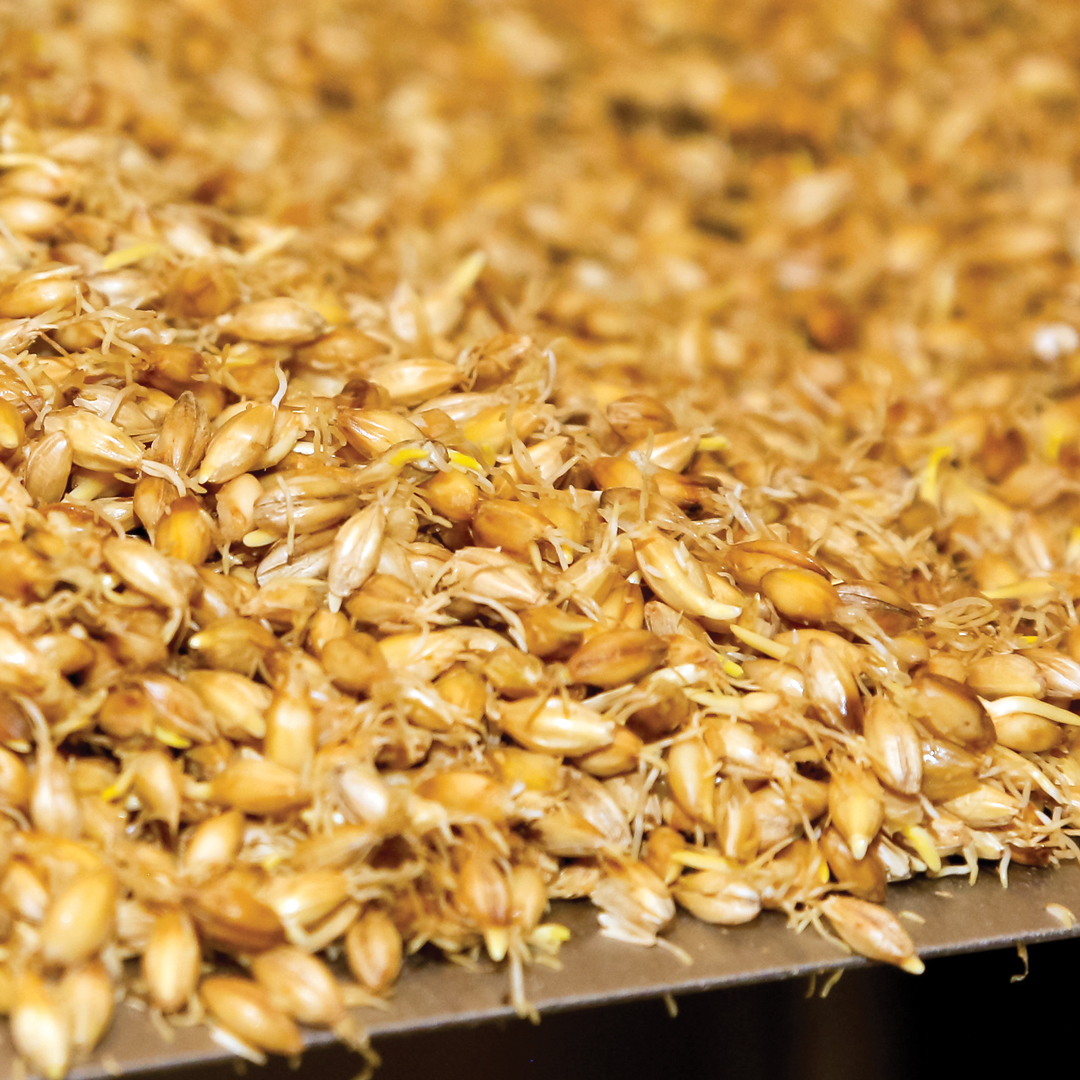KEEP UP THE GOOD WORK
BY PETER WATTS • PHOTO COURTESY OF CMBTC
Canada produces some of the world’s best malting barley. While new varieties supply high end-use quality and disease resistance, farmers can help ensure it meets the needs of domestic and international malting and brewing customers.
Canada leads barley and malt exporters for desirable protein levels. Critical for maltsters and brewers, protein provides enzymes that break down starches into fermentable sugars during processing, provides food (nitrogen) for yeast during fermentation and provides mouth feel and foam stability in finished beer. Excess protein can compromise yeast health or make the beer hazy or dark in colour.
Maltsters and brewers typically prefer protein content between 10 and 12.5 per cent. Large brewers often blend barley malt with lower-cost alternative carbohydrates such as rice or corn to achieve a light flavour profile. They prefer protein content greater than 11 per cent to compensate for the lack of enzymes in the adjuncts. Craft or all-malt brewers primarily use barley malt. With sufficient enzymes, 10 to 11.5 per cent protein in sufficient.
Weather is a determining factor for protein levels, but farmers can take steps to moderate protein content. Test the soil in fall or prior to seeding, consult with provincial seed guides for nitrogen application and work with an experienced regional agronomist. Ensure seeding is done at the appropriate depth and use seed treatment if disease is a concern. Barley can ideally be straight cut at 13.5 per cent moisture. Wet fall conditions often necessitate it be harvested at 16 to 20 per cent and conditioned with the use of natural air drying, supplemental heat or a grain dryer. It should then be stored in properly aerated bins.
Maltsters want a minimum germination rate of 95 per cent. During malting, barley germinates as starches and kernel cell walls break down. High germination improves efficiency of the process and quality of the finished product.
High plumpness and uniform kernel size are also desirable quality characteristics. Malt extract potential, or the amount of sugar that can be extracted from malt, generally correlates with barley kernel size. Uniformity allows efficient milling of malt and brewing. Follow optimal seeding rates for your farm or region to help ensure plump, uniform kernels. Alberta Grains recommends 300 viable seeds per square metre.
No more than five per cent of kernels should be peeled or broken, as husk and kernel damage affect the uniformity of barley’s water uptake during steeping, the initial process of malting in which barley is intermittently soaked. If too much water is absorbed, soggy kernels may not germinate. Husk and kernel damage often occurs during combining, auguring or conveying. This can be minimized by slowing the rotor speed, adjustment of concave clearance and careful handling of harvested barley.
As well, the rate of processing varies by variety, so maltsters call for minimum 95 per cent varietal purity. Buyers typically include a minimum specification in contracts to produce malt with high homogeneity and uniform quality traits. To ensure purity, keep seed and grain separated, use certified seed and, when in doubt, conduct purity checks at an accredited lab.
Meeting these quality parameters helps ensure selection for malt and associated premiums. By meeting the needs of our malting and brewing customers, we enhance Canada’s value proposition as a supplier of high-quality grain.
For additional information, visit the Alberta Grains seeding rate calculator on the albertagrains.com Agronomy page.
Peter Watts is the CMBTC managing director.







Comments